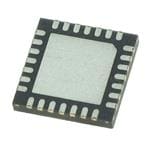An occupancy sensor is exactly as it sounds: a device for sensing whether an indoor space or room is currently occupied. Many advanced occupancy sensors also detect the number of people present, often by way of sophisticated video content analysis.
Occupancy sensors can be considered a green technology in the sense that they can minimize energy waste and enable significant savings. This is accomplished in at least two ways, often the most effective of which is intelligent HVAC (Heating, Ventilation, and Air Conditioning) control. In the U.S., the required minimum amount of airflow is regulated by OSHA, which states that if no occupancy sensor is present in a room, then it must be ventilated with fresh air as if a maximum number of people are occupying the room at all times. Without an occupancy sensor, wasteful and unnecessary HVAC operations occur if the room is seldom used or is occupied by far fewer people. Similarly, automatic lighting shutoff can save energy by providing lighting only when, and to the amount, necessary. Proper lighting shutoff may call for a combination of both occupancy sensors and scheduling, and so a real-time clock (RTC) is often included.
Major subsystems include:
- Sensor devices:
- Motion sensors: used to determine when to activate the camera/image sensor and when the camera can be disabled to save energy. The most common of these use passive infrared (PIR) technology.
- Image sensors and optics: used for counting the number of occupants present in a room
- Ambient light sensors: used to sense the presence of additional light sources, such as daylight, thereby enabling the main lighting to be dimmed or turned off completely.
- Processing:
- MCU/DSP: used to control the various sensors, interpret data, and execute the necessary control logic to respond correctly to present conditions.
- Connectivity:
- Ethernet, serial bus and/or wireless networking such as Zigbee: used to communicate with the head end, where building operations personnel can monitor status and override controls.




